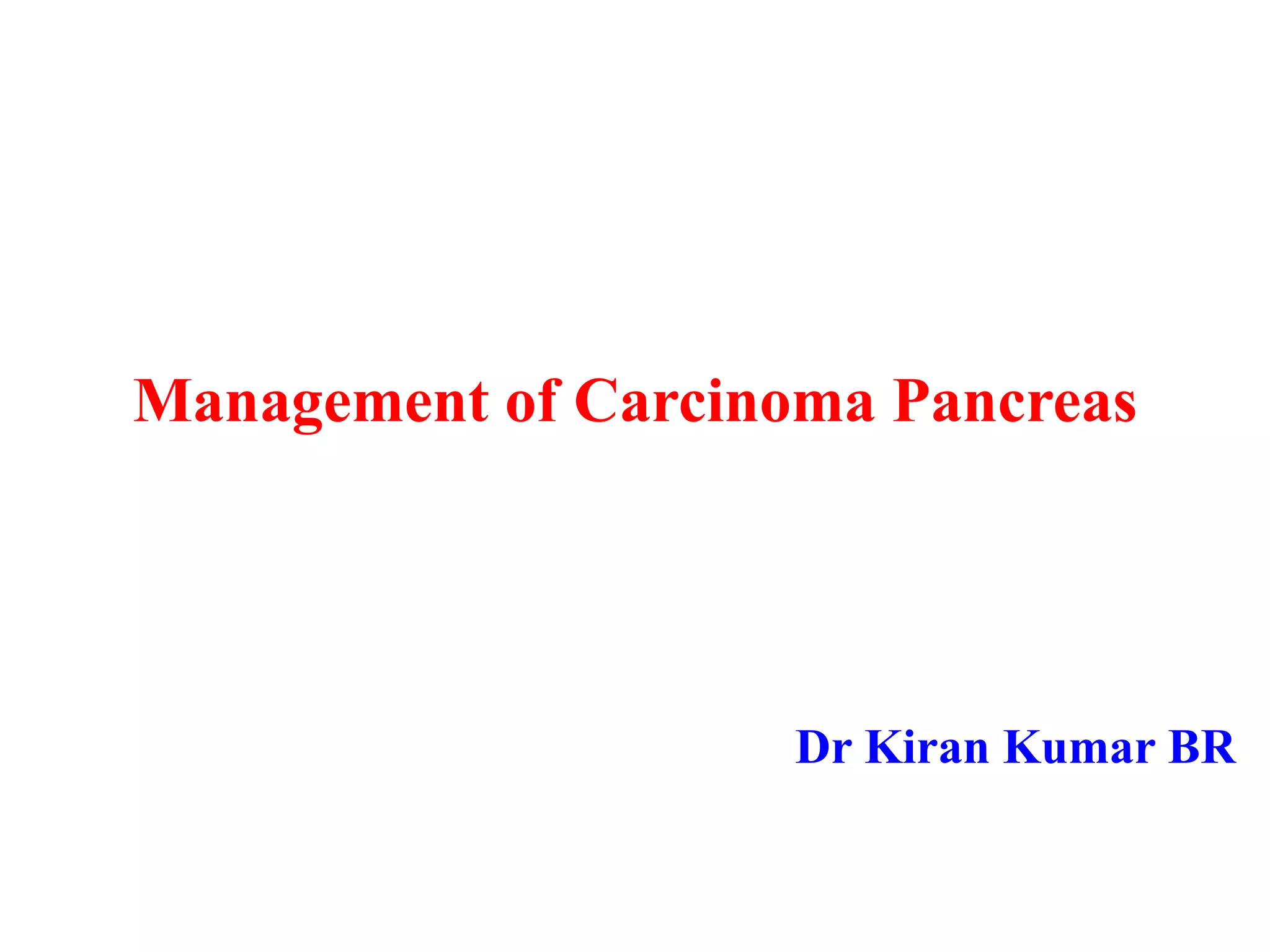This document summarizes the management of pancreatic carcinoma. It discusses the anatomy, epidemiology, risk factors, hereditary syndromes, pathophysiology including pre-cancerous lesions, types of pancreatic cancer, staging, prognostic factors, diagnostic techniques, treatment including surgery, chemotherapy, targeted therapy, radiotherapy and historical prospective studies. It provides a comprehensive overview of pancreatic carcinoma covering all relevant aspects of the disease.





















































